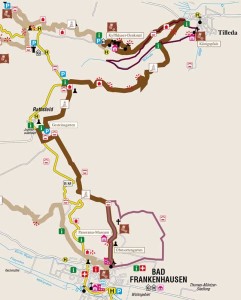Kyffhäuser Trail
Nature Park Kyffhäuser » Kyffhäuser TrailQuality under your feet
The Kyffhäuser Trail leads you through open Mediterranean karst landscapes, deserted beech forests and aromatic orchards to all the attractions and natural wonders in the vicinity. The 37-kilometer trail can be hiked comfortably in three days. You'll start and finish the round-trip in the spa town of Bad Frankenhausen.
At the edge of the trail you'll find out whether rocks can stink. Make the acquaintance of the Tilledaer Princess. Or let your smartphone tell you stories! Fascinating views across the Golden Aue or from the tops of the Kyffhäuser hills round off your hiking adventure.
Brochure "Kyffhäuser Trail" (7,5 MB, PDF)
Legs
First Leg – Through the bizarre Südkyffhäuser (8.8 km)
The first leg of the Kyffhäuser Trail leads through a bizarre karst limestone terrane from the spa town of Bad Frankenhausen to the legendary Barbarossa Hohle (Cave).
The hike begins amidst old half-timbered houses at the Anger in Bad Frankenhausen. You'll head through the leafy spa park to the salt water spring grounds, which was once the source of the town's wealth. At this place just 128 meters above sea level, you have reached the lowest point along the Kyffhäuser Trail.
Going slightly uphill, you'll pass the Hoheneck castle and hike through the chestnut tree-lined road to the Südkyffhäuser GeoPfad (geotrail). Forests of gnarled trees, rocky outcrops and unimproved steppe-like grasslands peppered with colorful blossoms line this section of the trail. From info boards beside the trail you can learn how plants protect themselves from the sun and whether you can bake bread from stones.
There are interesting places to take a break while you enjoy one of the wonderful views of the floodplains and valleys in the Kyffhäuser Nature Park. Or visit the Nature Park Station where children big and small can amuse themselves on the stone pendulum and in the jump pit.
On a tour through the enormous underground system of hollow spaces in the Barbarossa Cave, you can see the Kyffhäuser Trail from below. Maybe you'll find the hiding place of old Barbarossa and take a seat on his emperor's throne.
Second Leg – Through Kyffhäuser Forest with hidden fortresses (12.5 km)
Let yourself be carried off into the Kyffhäuser Forest. There you'll discover hidden fortresses and the landmarks – the TV tower and the Kyffhäuser Monument – which are visible from far away.
From the Barbarossa Cave, the Kyffhäuser Trail leads to the village of Steinthaleben. The Stone Age traces of a former settlement proves that the place is not just as old as the hills but is made from the hills too. Specifically, many of the houses had walls made of stone taken from nearby quarries.
A majestic beech forest lines the way to Kulpenberg. At 473 meters, Kulpenberg is the highest hill in the Kyffhäuser range and, with the TV antenna tower adding another 92 meters, is visible from a long way away.
The Kyffhäuser Trail now leads you toward the Rothenburg ruins. Starting at the hikers' hut near the ruins, the two-kilometer-long forest trail leads you through idyllic forests along the steep ridges of the hills. Look for deer tracks or lie down on the wooden bench and look at the world from a beetle's perspective. The quarry near the forest trail, which has been designated a GeoTope by the GeoPark Kyffhäuser e.V., offers a fascinating look into Earth's history.
An enormous gate on the loop to the Kyffhäuser Monument invites you to visit the romantic ruins at the lower level. Finally, at the top of the hill, you arrive at the Kyffhäuser Monument. From here you can enjoy the unmatched view over the forest canopy of the Kyffhäuser hills into the Golden Aue all the way to the Harz.
Third Leg – Over Orchards into the Middle Ages (15.9 km)
On the third leg of the Kyffhäuser Trail, you'll be escorted by orchards to places steeped in history. Taste the sweet fruit specialties and experience life in the Middle Ages at the imperial palace or in the Peasants' War, captured forever in a gigantic painting.
The trail leads downhill from the Kyffhäuser Monument to where the forest thins and a wide open orchard landscape begins. Along the orchard trail you can learn, among other things, how the fruit came to be here. Once at the orchard center in Tilleda, you can try some regional fruity specialties. Not too far away is Germany's only complete excavation of an imperial palace which once served as the residence of Emperor Barbarossa. From here the trail runs past the ruins of a mill on its way back to the Kyffhäuser forest.
In the rock garden near the Rathsfeld forest youth hostel, you can see the different kinds of stone – from the youngest to the oldest – which are found in the Kyffhäuser hills. Head through the forest to Schlachtberg, where almost 500 years ago peasants fought for a better life. A monument to the peasants' leader Thomas Müntzer is a reminder of the battle. The people of that time come to life in Germany's largest circular canvas in the Panorama Museum.
In the heritage orchard near the Panorama Museum more than 100 species of apple, pear and cheery are preserved for posterity. You can read on the nameplates of these grand fruit varieties whether you should savor the "beauties from Nordhausen" fresh from the tree or baked into a cake.
The view over Bad Frankenhausen and the valley invites you to linger one last time before you follow the Kyffhäuser Trail back to the hike's starting point Am Anger in Bad Frankenhausen.




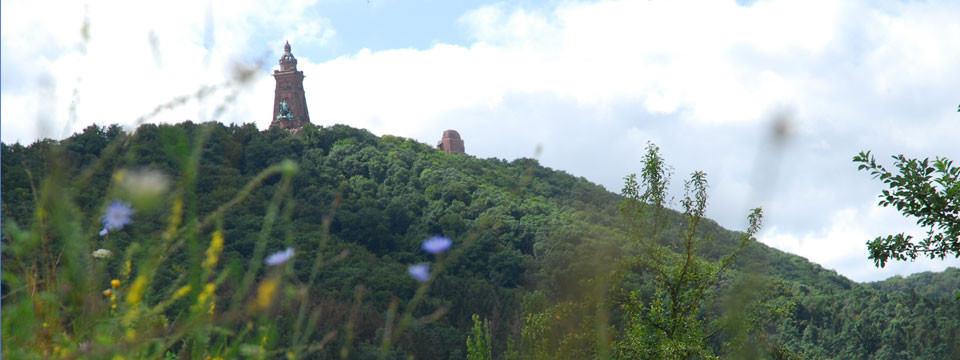
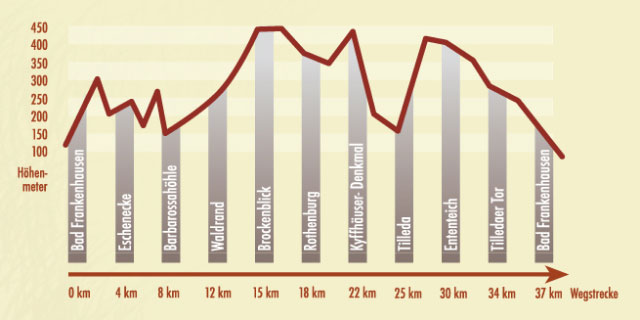 Elevation Profile for Kyffhäuser Trail
Elevation Profile for Kyffhäuser Trail Overview Map of Kyffhäuser Trail
Overview Map of Kyffhäuser Trail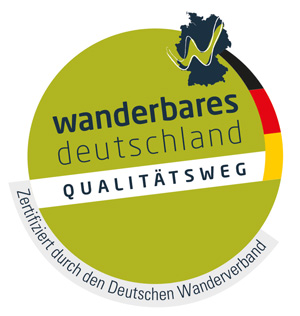 Quality seal for quality trail
Quality seal for quality trail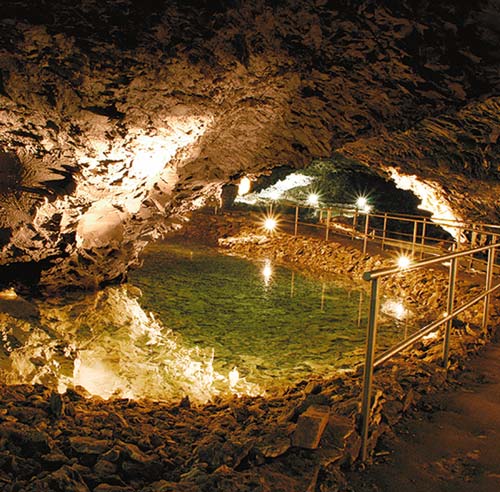 Barbarossa Cave
Barbarossa Cave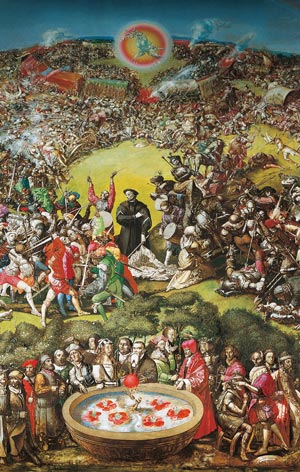 Panorama Monument
Panorama Monument Kyffhäuser-Denkmal
Kyffhäuser-Denkmal

